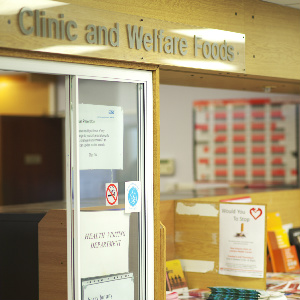One in ten practices say premises could be ‘hazardous to health’

One in ten GP practices have hazards that could affect the health of patients and staff, according to a survey of GPs and practice managers.
The survey of 527 practices by health analytics company Cogora, who publishes Pulse, also shows that more than half of practices do not have space to take on staff, despite the current workforce crisis.
Other problems identified by practices included outdated facilities and unsuitable access for less-able bodied patients.
In some cases, this coupled with poor management and the long-term under investment in existing GP premises has left practices unable to address concerns they think are dangerous.
In all, 270 practices answered the question about potential hazards, with 10% saying they were ‘aware of problems with your facility that could be hazardous to health’, citing sewerage problems, holes in roofs, ‘infestations’. the presence of asbestos and a lack of compliance with fire regulations.
One GP said: ‘The roof of one part of the surgery blew off last year. It is yet to be permanently fixed and the patches are currently held on with wooden pallets and breeze blocks. Water ingress affecting the treatment room and electrics causing loss of heat, light and power are ongoing problems.’
Another said they were ‘unable to get patients out of the building on a stretcher’.
Other major concerns for practices were the impact that space constraints were having on the services they could offer.
Three fifths of respondents (58%) said that they would be unable to house a new staff member if they were given one, with 44% saying they had insufficient space for current staffing levels.
This poses particular questions for Government plans to sidestep the GP workforce crisis by recruiting alternative primary care roles, such as physician associates or clinical pharmacists. In his new deal speech Jeremy Hunt pledged 5,000 more clinical staff to work alongside GPs by 2020, and a major workforce review championed the idea of GPs having administrative assistants to take on paperwork.
Related stories
Practices fear closure after nine-fold increase in bills
GP premises fund raided to boost seven-day access pilots
Over 1,000 practices awarded share of £190m fund to upgrade premises
One respondent added: ‘We need more space. We had to set up a PC in the kitchen for when GPs don’t have a room.’
And another wrote: ‘Our space is only just adequate, there is no room for flexibility or extra staff, we would like to move to two registrars…. I have no confidence that anything the caretaker cannot do, will be fixed within what I would consider a reasonable time period.’
Earlier this year, health secretary Jeremy Hunt said in his ‘new deal’ speech: ‘Many of our primary care facilities are simply not fit for purpose. If we are to respond to ever changing and ever increasing demand, we need significant improvements in the quality of our physical infrastructure.’
He highlighted the Government’s £1bn fund for GP, across four years, for modernising GP premises announced last year, adding that over 1,000 GP practices had bids provisionally approved for £190m of investment in premises this year.
However, this funding has been given preferentially to practices who are also intending to extend their opening hours, or reduce emergency admissions for the over 75s.
GPC deputy chair Dr Richard Vautrey told Pulse: ‘These findings are in line with GPC premises surveys we’ve done before and it is a sign of the lack of investment in practice premises for many years. It is a real concern that the lack of investment by NHS England and their predecessors have left so many GPs worried that their practice premises could pose a safety risk to patients.’
He added that investment in premises has not kept pace with general practice’s growing workload and now ‘there is a real need to use the £1bn premises development money to enable as many practices as want to to expand their facilities but also crucially to provide the necessary recurrent resource to make such expansion viable.’
Pulse October survey
Take our July 2025 survey to potentially win £1.000 worth of tokens










